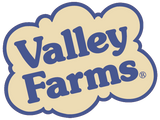Which birds eat them, why they love them, and why peanuts are so good for our flying friends.

Great tit on peanut garden feeder
Have you noticed that some wild birds have an affinity for peanuts? No, it’s not just you who loves these savory, crunchy legumes. Peanuts are actually a vital component of many wild birds’ diets. High-energy and delicious, peanuts are a go-to for many wild bird species. Read on to learn which birds go nuts for peanuts, why they love them so much, and the different types of peanuts birds may eat.
Which Birds Eat Peanuts?
If you’re looking for a new type of wild bird feed to add to your bird feeder, why not consider peanuts? A wide variety of wild birds are peanut-lovers. Some of the most common types of birds that will tuck into this nut include Jays, Chickadees, Cardinals, Nuthatches, Woodpeckers, Flickers, Titmouses, Cardinals, Doves, and many others.
While many types of birds will flock to your birdfeeder if you fill it with a wild bird food mix with peanuts, there are some birds that tend to steer clear of them. Hummingbirds, small Finches, and other very small songbirds may avoid peanuts because of their size.

Bluetits eating peanuts from a birdfeeder
Why Birds Love Peanuts
What’s not to love about peanuts? Nutritious and high in fat, peanuts are delicious and compact. Protein encompasses up to 30% of the calories in peanuts, making them an excellent source of energy. They also contain vital vitamins, minerals, fiber, and oil, all of which are crucial for keeping the birds nourished in flight and warm during chilly winter nights. Best of all, peanuts are the perfect food for birds to store as snacks for another day.

Adult male great spotted woodpecker
Types of Peanuts Birds Eat
There is no one-size-fits all approach for feeding peanuts to backyard birds. Blue Jays and Red-Bellied Woodpeckers, for example, tend to love peanuts in the shell. Other woodpeckers, however, as well as Nuthatches, Chickadees, and Titmice, prefer peanut kernels.
Depending on farming availabilities, we procure blanched peanuts kernels (boiled to remove the skins) and roasted peanut kernels. Sometimes we will mix these together especially when they are ingredients found in many of our blends like Hearty Delight and Woodpecker Mix.
The types of peanuts that Valley Farms selects are Virginia and Spanish peanuts, which have a higher oil content. Virginia peanuts are grown in the South, all across the Carolinas, Georgia, Florida, and even in Oklahoma. Spanish peanuts for birds are typically found in Texas and New Mexico. Think about the types of birds that typically come to your area and which ones you’re looking to attract when deciding which type of peanut is best for your feeder.

Blue Jays munching on peanuts
How to Store Peanuts
As with all bird food, peanuts should be stored in a cool, dry place out of direct sunlight. Always follow instructions on product packaging for additional information. Storing peanuts is quite simple; the main thing to keep in mind is that you want to eliminate and reduce moisture as much as possible. This is to prevent the possibility of aflatoxins, which are a family of toxins produced by fungi that are occasionally found in peanuts. The risk of exposure to aflatoxins in American peanuts is quite low, but just to be on the safe side, always check that the peanuts in your feeder are neither moldy nor discolored, and always store them properly.


Ready to enrich your birds’ diets? Get your best peanut products right here at Valley Farms® when you order today!




